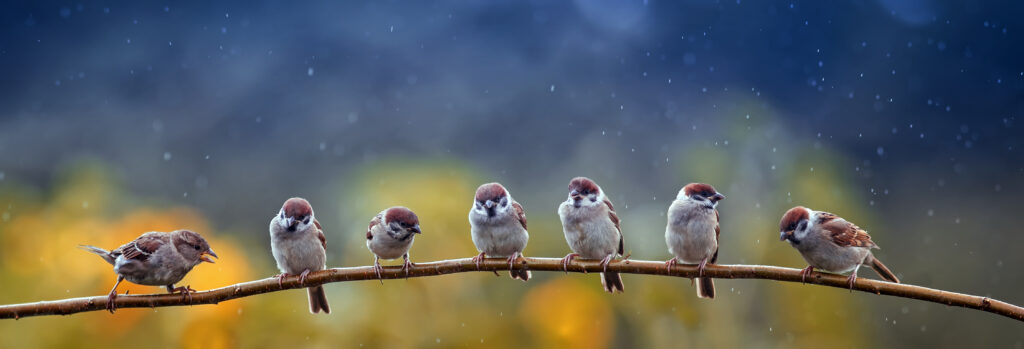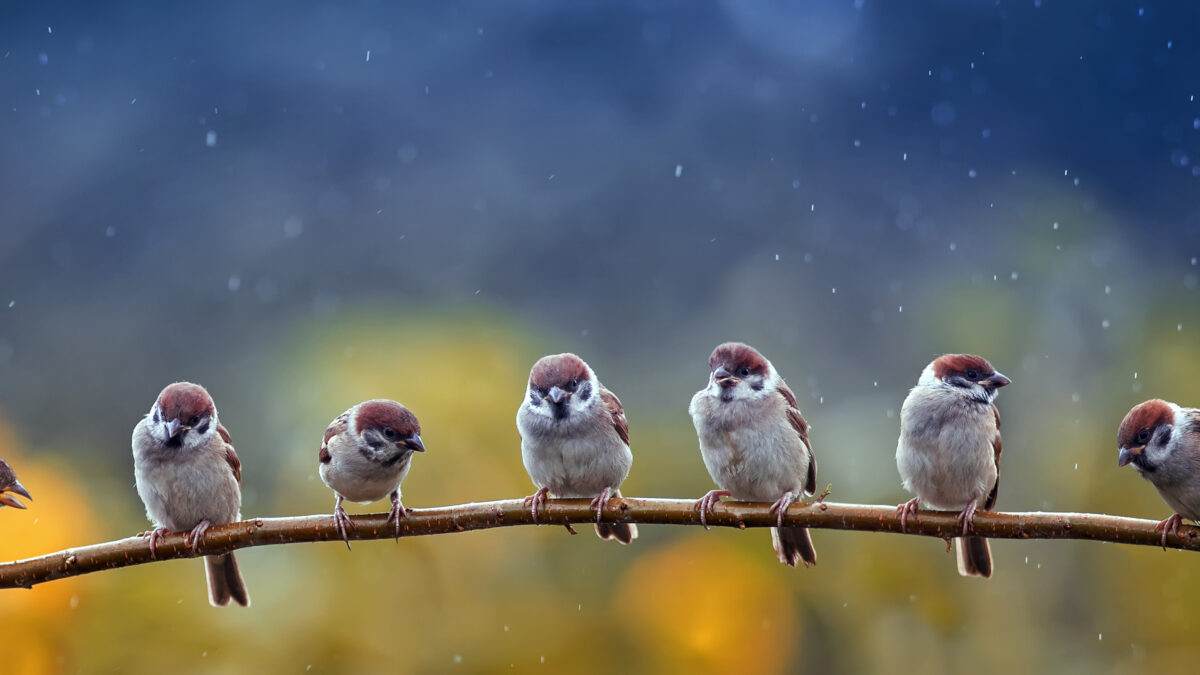75% of all birds born die within the first year. But I try to take care of the ones I can.

Growing up, I spent an unusual amount of time with birds. My mother was a wildlife biologist at the Kevin P. Clinton Wildlife Center at Penitentiary Glen outside of Cleveland, Ohio. Wildlife biologists make much less money than one would hope, so while she watched over the birds, the birds watched over me.
The wildlife center took in injured animals, and ideally nursed them back to health for release. But some animals, due to serious afflictions like blindness or human-imprinting (a relatable injury), were kept at the center to live out their days with their fellow albeit larger bipeds, including me and my mom. There was a turkey vulture haunted by a broken wing, a blind blue heron, and several owls who grew to be staff favorites — they would partially close their eyes when being pet, and thus endear themselves to the more anthropomorphically inclined humans. When I was 16, my mom released several young owls in our backyard, and when I invited boys over to drink Mike’s Hard in our hot tub, the owls would swoop down and sit behind me. I was learning to wield an animal power of my own, and they watched me grow into it in the fluorescent-lit waters.
The Wildlife Center is also where I first encountered death and the varying degrees of respect we pay life. I was handed a bag of semi-frozen, dead mice and instructed to break one off from the mass of other frozen mice to feed to a hawk. I plucked out the small body of something that had been born to a mother and nursed, its life ending in a plastic bag with a handful of its dead sisters. I pulled a plump one.
The hawk sat perched on my mother’s gloved hand, and I held the mouse in a gloved hand of my own. The hawk looked to my hand offering the meal, then to me, holding her gaze. It was a negotiation between predators, the precarious process of hope into trust. Her wings opened like a cloak around her and she arched forward, snapping the mouse from my fingers. I felt, with the small death being pulled from my tender hand, the inner heat young dirty children will always hope is magic—the mother in Nature, the fear in God.
In the backroom of the center, away from public view, a clear box the size of a kennel sat on the floor against the back wall. I only ever saw one thing in that box: a goose. I don’t remember what was wrong with it, or why it couldn’t be resolved, I just remember that I wasn’t meant to have seen it euthanized, and did. I didn’t have to be told what the lurching of its neck meant—I can still feel it in the lightless places of my body. The birds watched me as I watched what humans could do when they left the room to tend to phone calls and emails.
Now, some twenty years later, I feed the birds 2,000 miles from where I met them. They, like humans, are more or less the same in Topanga as they are in Ohio. They might have different feathers, different calls, but they all seem to politely sleep past 7 a.m. and eat an entire feeder every day. But of course, like humans, they are their own birds.
There is a purple finch who comes alone. Amongst a flurry of house finches, pillaging the feeder in pairs, the purple finch fluffs his feathers and sits on the branch closest to the feeder and waits. Sometimes, he’ll flutter close to the feeder, even put his feet down on one of the landings, still flapping his wings, but then lose his gusto and fly back to the branch. I’ve never seen him eat.
There is a family of acorn woodpeckers. They sit in a row, all six of them, on one of the further and thicker branches in the oak. They are constantly yelling at each other. Sometimes I yell back, squawking in their way, and they return the call in spades.
There are scrub jays, oak titmouses, a pair of downy woodpeckers, dark-eyed juncos, and beneath the feeder, two-stories below on the ground picking up what’s left are band-tailed pigeons, spotted towhees, and even some white-breasted nuthatches in the lower branches.
The Anna’s Hummingbirds (if my spotting skills are correct) are the children at the oak tree’s holiday party, running between the branches of other birds, chasing each other, diving and turning, unbothered by the slow fapping of larger feathers. They are the fighter jets of the oak. They have no patience for anyone and will (and have) aggressively harassed the Cooper’s hawk that perches here occasionally; the cat that lays on the deck, belly up, watching for a meal; and myself when their feeder is empty. If any bird understands it is being fed, it seems to be the absolute smallest one.
But I’m an obedient keeper. When the cat bites my cheeks at five in the morning, I rise and make my way to the deck door, hefting up the 35 lb bird seed bag laying next to it to fill the feeder before my body recognizes the cool of the mountain morning. And I call them to me, in lifted whistles and guttural falsettos. I tell my sweets the stores have been refilled, and I hear their whispers turn to chatter before the sun makes its way above the crest across the canyon gully. I feed the cat his own breakfast, put the water on the stove, and snuggle back into bed for the few minutes left of just being.
And maybe that’s what I like about birds: the just being part. Their journey seems neither particularly harrowing nor complicated. You make it through the first year and you just get to bird. I long for it with both the heavy heart of nostalgia and the feeling of sorrow as you willingly pile the last spoonful of pie on top of the others in your throat. I want my life to be as simple as pouring bird seed into cheap feeders on a splintered deck. I want the moments in the hammock beneath the feeder, watching their flutters and frustrations, to be plentiful and not muddled by breaking news and tax questions and grief.
But tax plans often have no business with birds, and it’s I who busy myself muddying their image with things better kept in emails and poorly formatted benefit handouts. Why can’t I blur my banking with bananaquits? Why not sully a work email with the bzzrrrrr of a halting hummingbird? I’m sorry officer, but I cannot stop thinking about how generous acorn woodpeckers are with their time.
I worry, with earnest sincerity, that I will not be able to enjoy life because of anxieties. But I dream of when anxiety must worry that I will not be able to enjoy it because of life. I will be with the birds — the ones who barrel through, chattering in delight over found feeders, smashing into windows only to ruffle their feathers out and fly back over the ledge. I want their flutters and flight to last as long as they can. As long as I can help them. As long as we can help each other.
So many of them die, but not from ennui or giving up. They flutter around a feeder until they crack the approach. They toggle for position on the suet persisting until they get theirs. They swoop around the cat intimidating him right back. And like they did 20 years ago, they keep accepting the handouts of a strange girl desperate for connection beyond her realm. Sometimes, if I’m very quiet, languid in the hammock, a bird will look into my eyes longer than a person can bear to, and I will feel that rapturous harmony that the heartless and hopeless call witchcraft.
I feed the birds because the birds feed me.













